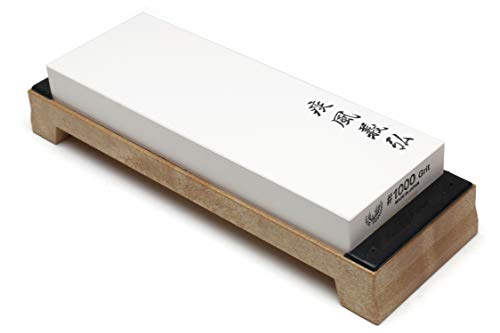The Best Maple Cutting Board, Expert Picks
Introducing the best maple cutting board on Amazon! Made from high-quality maple wood, this cutting board combines elegance with functionality. Its sturdy construction and smooth surface provide the perfect canvas for all your slicing and dicing needs. With ample space and a durable build, it's the ideal kitchen essential for any culinary enthusiast. Upgrade your cooking game with this timeless addition to your kitchen arsenal!

Looking for the best maple cutting board on Amazon? We've got you covered. In this review, we'll delve into the top-rated maple cutting boards available, examining their quality, craftsmanship, and user satisfaction. Maple is renowned for its durability and aesthetic appeal, making it an excellent choice for any kitchen. Join us as we explore the finest maple cutting boards on Amazon, helping you find the perfect addition to your culinary arsenal.
What to consider before buying maple cutting board
If you're in the market for a maple cutting board, you're making a choice that combines elegance, durability, and functionality. Maple is a popular choice for cutting boards due to its strength, fine grain, and natural beauty. However, before you click that "buy now" button on Amazon, there are several factors you should consider to ensure you're getting the best maple cutting board for your needs. Here's what to keep in mind:
-
Quality of the Maple: Not all maple cutting boards are created equal. Look for cutting boards made from high-quality hard maple wood, preferably sourced from North America. Hard maple, also known as sugar maple, is dense and durable, making it ideal for cutting boards that will withstand heavy daily use in the kitchen.
-
Construction: Pay attention to how the cutting board is constructed. Ideally, it should be made from solid wood rather than glued-together strips. Solid wood construction ensures durability and longevity, as well as a smooth, seamless surface for cutting.
-
Thickness: Consider the thickness of the cutting board. Thicker boards are more stable and less prone to warping over time. Aim for a thickness of at least 1 inch to ensure your cutting board can handle heavy chopping and slicing without flexing or bending.
-
Size: Think about the size of the cutting board that will best suit your needs. Do you have limited counter space, or do you need a large cutting surface for preparing family meals or entertaining guests? Consider your kitchen layout and cooking habits when choosing the size of your maple cutting board.
-
Maintenance: Maple cutting boards require regular maintenance to keep them in top condition. They should be hand-washed with mild soap and water after each use and dried thoroughly to prevent warping and cracking. Additionally, maple cutting boards should be periodically treated with food-grade mineral oil to maintain their beauty and prolong their lifespan.
-
Price: While maple cutting boards may come with a higher price tag compared to other types of cutting boards, they are a worthwhile investment due to their durability and longevity. Consider the price in relation to the quality and craftsmanship of the cutting board, as well as how often you'll be using it in your kitchen.
-
Additional Features: Some maple cutting boards come with extra features such as juice grooves, handles, or non-slip feet. Consider whether these features are important to you and will enhance your cooking experience.
- KR Score9.9
Kitchensradar.com established a ranking system called KR Score. KR Score is unaffected or unrelated to any websites run by manufacturers or sales agents. Learn more
- BrandJohn Boos
- KR Score9.8
Kitchensradar.com established a ranking system called KR Score. KR Score is unaffected or unrelated to any websites run by manufacturers or sales agents. Learn more
- BrandJohn Boos
- KR Score9.6
Kitchensradar.com established a ranking system called KR Score. KR Score is unaffected or unrelated to any websites run by manufacturers or sales agents. Learn more
- BrandJohn Boos
- KR Score9.5
Kitchensradar.com established a ranking system called KR Score. KR Score is unaffected or unrelated to any websites run by manufacturers or sales agents. Learn more
- BrandJohn Boos
- KR Score9.4
Kitchensradar.com established a ranking system called KR Score. KR Score is unaffected or unrelated to any websites run by manufacturers or sales agents. Learn more
- BrandSonder Los Angeles
- KR Score9.1
Kitchensradar.com established a ranking system called KR Score. KR Score is unaffected or unrelated to any websites run by manufacturers or sales agents. Learn more
- BrandJohn Boos
- KR Score8.8
Kitchensradar.com established a ranking system called KR Score. KR Score is unaffected or unrelated to any websites run by manufacturers or sales agents. Learn more
- BrandCONSDAN
- KR Score8.6
Kitchensradar.com established a ranking system called KR Score. KR Score is unaffected or unrelated to any websites run by manufacturers or sales agents. Learn more
- BrandWoodForChef
- KR Score8.5
Kitchensradar.com established a ranking system called KR Score. KR Score is unaffected or unrelated to any websites run by manufacturers or sales agents. Learn more
- BrandMevell
- KR Score8.0
Kitchensradar.com established a ranking system called KR Score. KR Score is unaffected or unrelated to any websites run by manufacturers or sales agents. Learn more
- BrandCasual Home
Last update on 2024-05-14 / Affiliate links / Images, Product Titles, and Product Highlights from Amazon Product Advertising API
Yes, maple is an excellent choice for cutting boards. It's a dense hardwood with a closed grain structure, making it durable and resistant to knife marks. Maple is also gentle on knife blades, helping to maintain their sharpness over time. Additionally, maple has natural antimicrobial properties, which can help inhibit the growth of bacteria on the surface of the cutting board. Overall, maple cutting boards are popular among chefs and home cooks alike for their durability, knife-friendliness, and hygienic properties.
What is the best brand of wooden cutting board?
Determining the "best" brand of wooden cutting board can depend on various factors such as personal preferences, budget, and availability. However, some well-regarded brands known for producing high-quality wooden cutting boards include John Boos, Boos Blocks, Proteak, Ironwood Gourmet, and Catskill Craftsmen. These brands often offer a range of wooden cutting boards made from different types of wood, including maple, walnut, cherry, and teak, catering to different preferences and needs.
What is the best wood for cutting boards?
The best wood for cutting boards is typically hardwoods that are dense, durable, and have tight grain structures. Maple, walnut, cherry, teak, and beech are among the most popular choices for cutting boards due to their durability, knife-friendliness, and natural antimicrobial properties. These woods are less likely to develop deep knife marks and are resistant to moisture absorption, making them less prone to bacterial growth. However, it's essential to choose wood that is sustainably sourced and certified food-safe to ensure the safety and quality of the cutting board.
What is the best cutting board to avoid bacteria?
The best cutting board to avoid bacteria is one that is made from a non-porous material, easy to clean, and resistant to moisture absorption. While wooden cutting boards, such as those made from maple or other hardwoods, are often preferred for their natural antimicrobial properties, plastic cutting boards are also highly effective at inhibiting bacterial growth. Plastic cutting boards are non-porous and can be easily sanitized with hot, soapy water or diluted bleach solutions. Regular cleaning and proper maintenance are essential for reducing the risk of bacterial contamination on any cutting board surface.
What is the least toxic cutting board?
When it comes to selecting a cutting board with minimal toxicity, it's essential to consider the materials used in its construction. Generally, cutting boards made from natural, untreated hardwoods such as maple, walnut, or cherry are considered to be the least toxic options. These woods are naturally free from harmful chemicals and additives, making them safe for food preparation. It's important to avoid cutting boards made from composite materials or those treated with chemical finishes, as these may contain toxins that can leach into food over time. Opting for cutting boards made from sustainably sourced, food-safe wood is the best way to ensure minimal toxicity and promote a healthy kitchen environment.
Related Posts:
The Best Cutting Board Of 2024
10 Best Cutting Board On Amazon, Top Rated
Best Small Cutting Board For Beginners 2024
10 Best Flexible Cutting Board, Reviews & FAQs






























